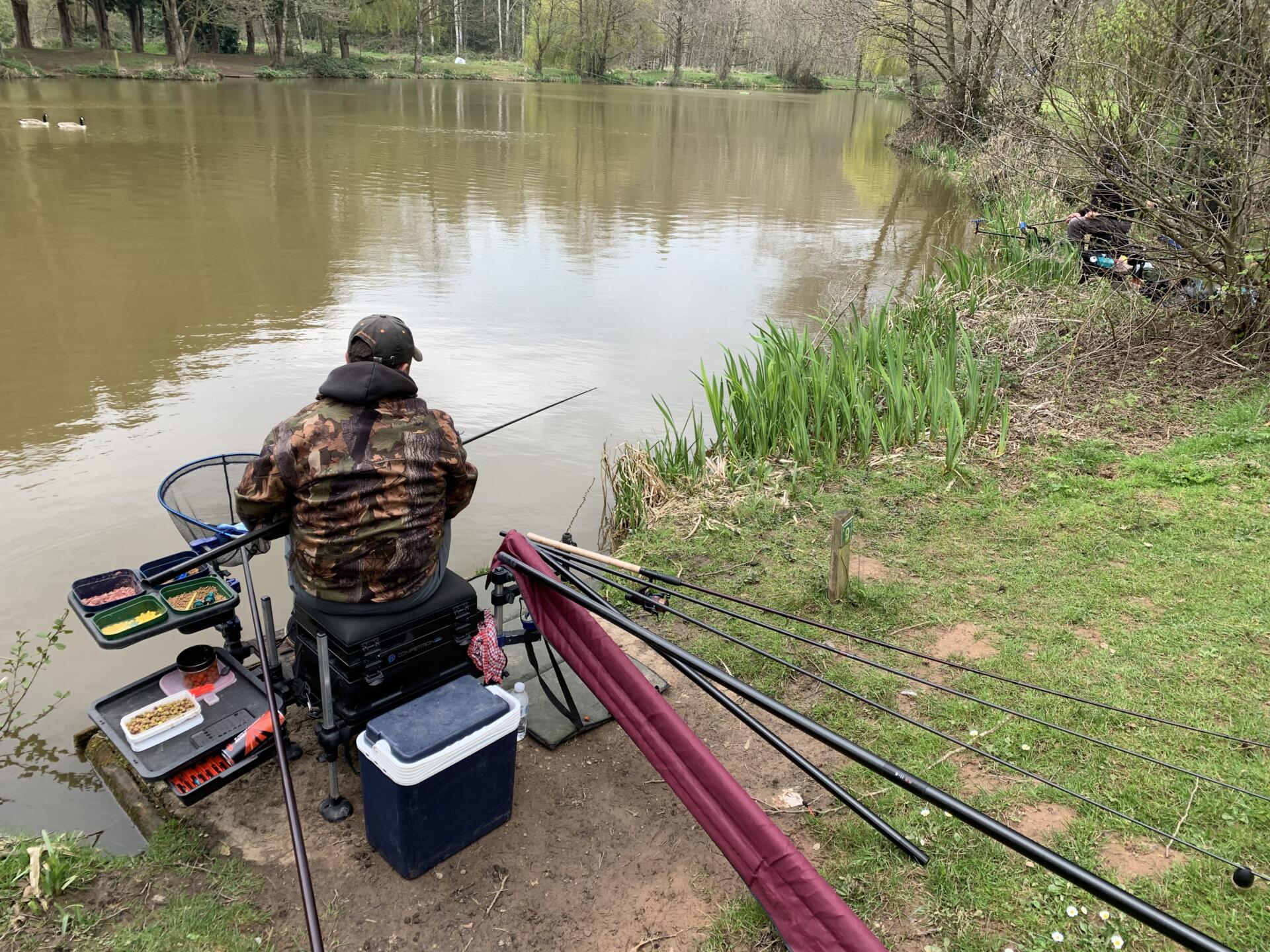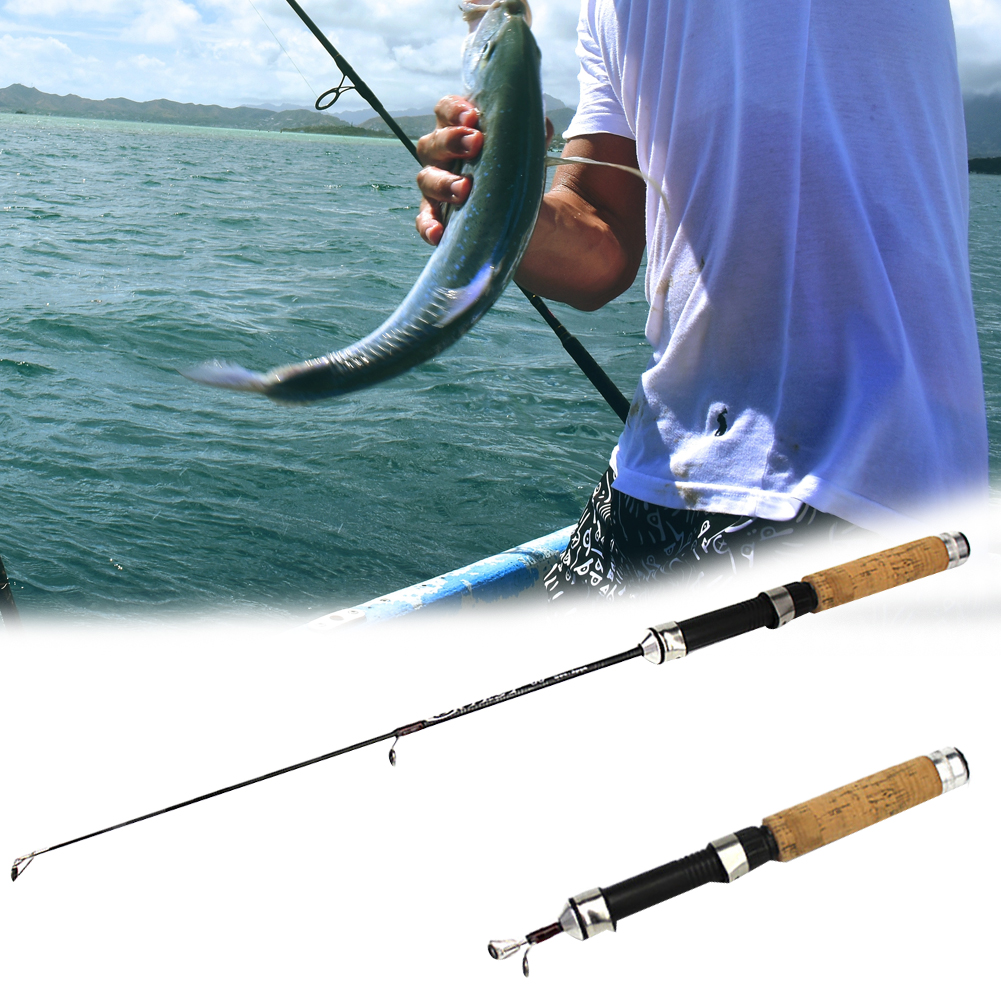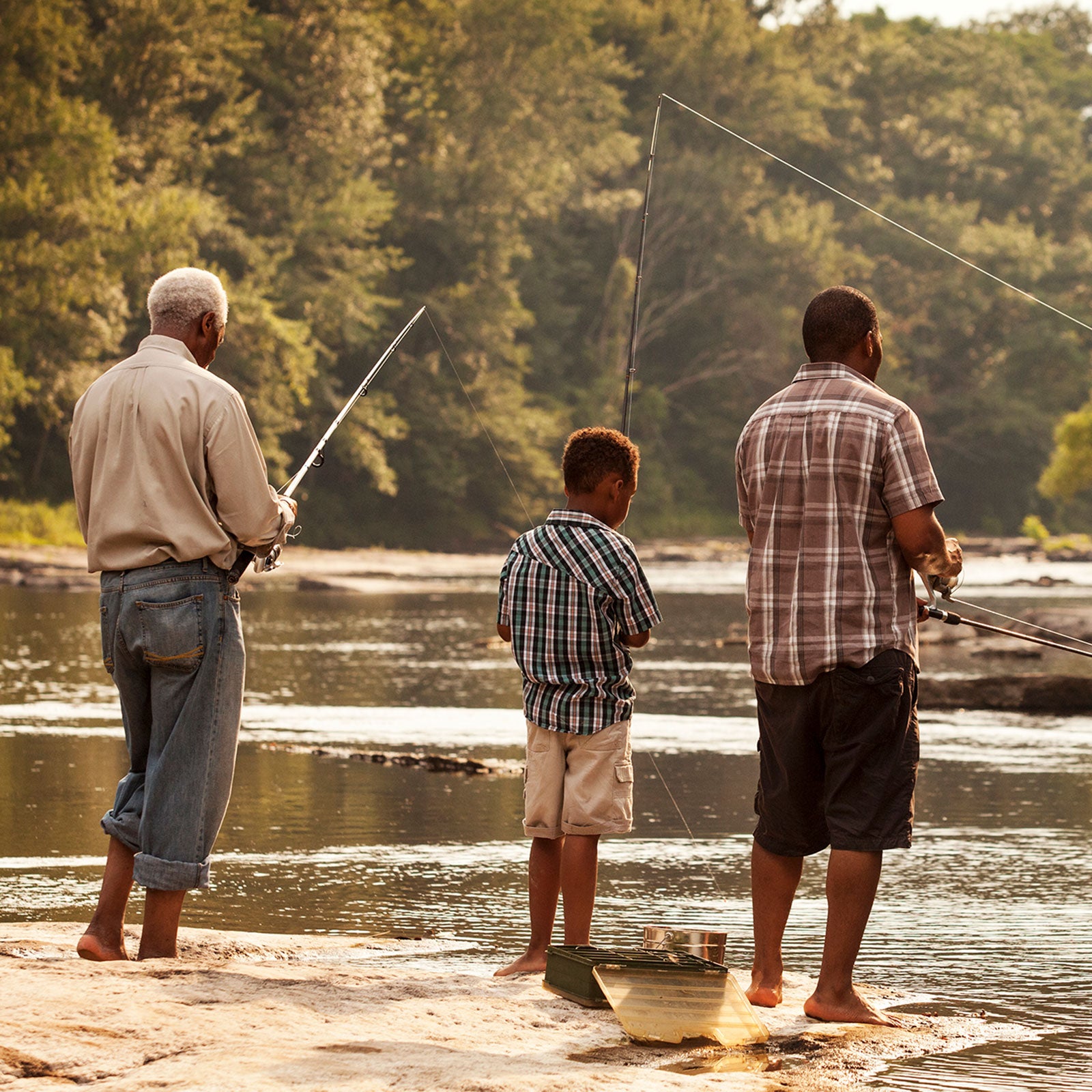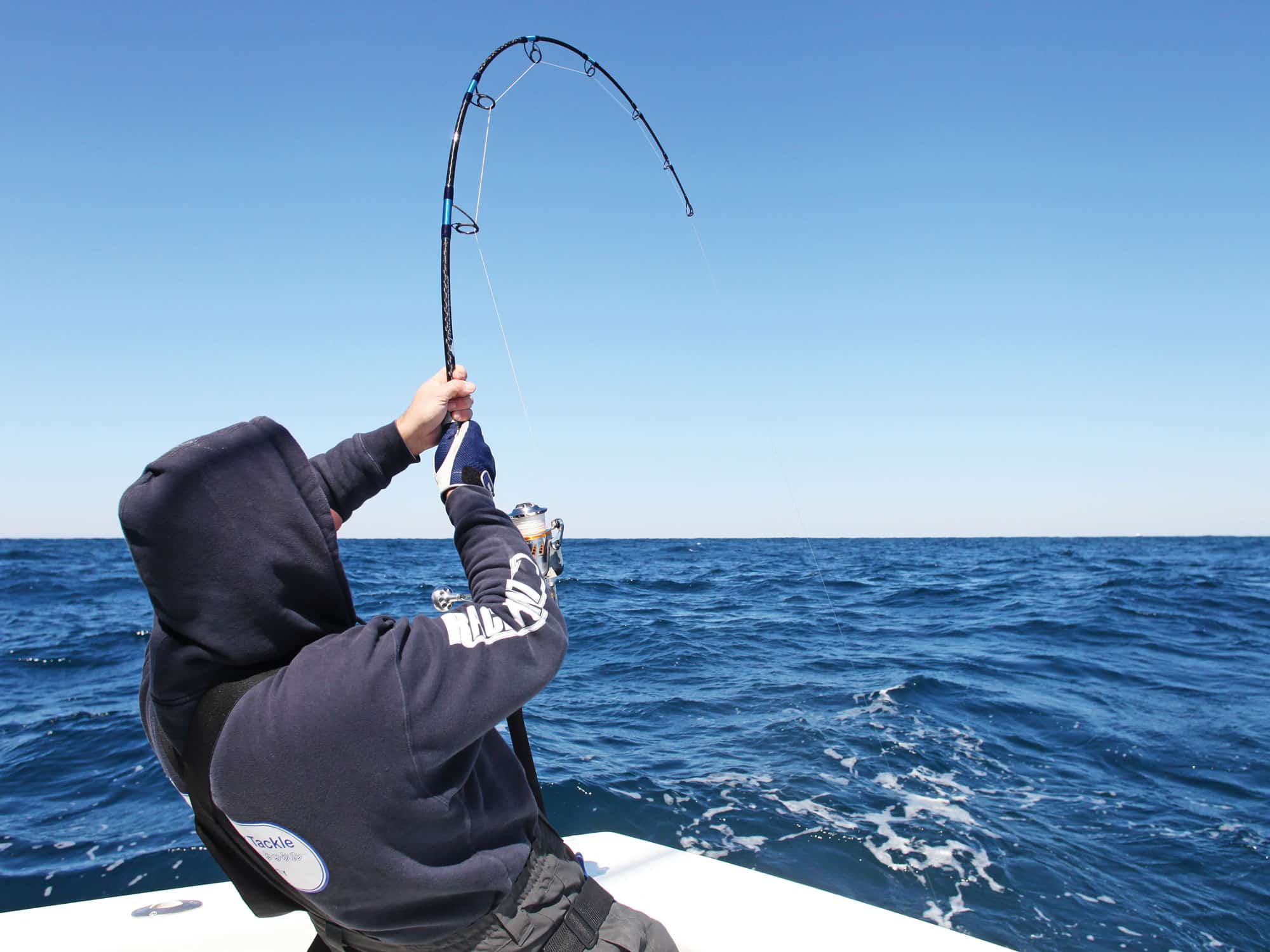Fishing is a popular recreational activity enjoyed by millions worldwide. Using a fishing rod is integral to the sport, influencing the success and enjoyment of your fishing experience. Consequently, having clear instructions and understanding key techniques will enable beginners to become proficient anglers. Therefore, this comprehensive guide covers the essentials of using a fishing rod, from selecting the right gear to mastering casting techniques and practicing proper maintenance. By delving into these aspects, you can enhance your fishing skills and enjoy more successful outings.
Selecting the Right Fishing Rod and Equipment
Choosing the appropriate fishing rod and equipment is the first step to a successful fishing experience. Understanding how to select the right gear ensures an optimal setup. Therefore, exploring the selection process is essential.
Types of Fishing Rods
Fishing rods come in various types, each designed for specific fishing styles and environments. Common types include spinning rods, casting rods, and fly rods. Spinning rods are versatile and user-friendly, making them suitable for beginners and general-purpose fishing. Casting rods offer greater accuracy and control, ideal for more experienced anglers targeting specific species. Fly rods are used in fly fishing, where anglers cast lightweight flies to mimic insects. By understanding the different types of fishing rods, you can choose the one that best suits your fishing goals. Therefore, recognizing the importance of selecting the right rod type is crucial.

Choosing the Right Reel
Along with selecting a fishing rod, choosing the right reel is equally important. Reels come in various styles, such as spinning reels, baitcasting reels, and fly reels. Spinning reels are easy to use and versatile, making them a popular choice for beginners. Baitcasting reels offer greater control and precision but require more skill to use effectively. Fly reels are specifically designed for fly fishing and are paired with fly rods. When selecting a reel, consider factors such as gear ratio, drag system, and line capacity. By understanding the different reel types and their features, you can select the reel that complements your fishing rod and style. Therefore, recognizing the value of the right reel is essential.
Selecting the Right Line and Tackle
Choosing the right fishing line and tackle enhances your angling success. Fishing lines vary in material, strength (pound test), and diameter. The common types include monofilament, fluorocarbon, and braided lines. Monofilament lines are versatile and affordable, suitable for various fishing situations. Fluorocarbon lines offer low visibility and abrasion resistance, ideal for clear water fishing. Braided lines provide high strength and sensitivity, suitable for heavy cover and larger fish. In addition to the line, selecting the appropriate tackle, such as hooks, weights, and lures, is crucial. Match the tackle to the target species and fishing conditions. By understanding the importance of selecting the right line and tackle, you can enhance your fishing effectiveness. Therefore, recognizing the significance of the right gear is crucial.
Mastering the Basics of Using a Fishing Rod
Mastering the basics of using a fishing rod involves learning key techniques and practicing proper methods. Understanding these fundamentals ensures successful and enjoyable fishing outings. Therefore, exploring the basics is essential.
Assembling the Rod and Reel
Assembling your fishing rod and reel correctly ensures optimal performance and ease of use. Start by attaching the reel to the rod’s reel seat, ensuring it is secure and aligned. Insert the rod’s sections together, if it is a multi-piece rod, making sure the guides line up accurately. Thread the fishing line through the rod’s guides from the bottom to the tip, ensuring the line moves smoothly. Next, tie the line to the reel’s spool using an appropriate knot, such as an arbor knot, and spool the line evenly onto the reel. By understanding the steps to assemble the rod and reel, you can prepare your gear for optimal performance. Therefore, recognizing the importance of proper assembly is crucial.
Casting Techniques
Casting is a fundamental skill in fishing, allowing you to place your bait or lure accurately in the desired location. There are various casting techniques, with the overhead cast and sidearm cast being the most common. For the overhead cast, start by holding the rod with both hands, positioning the reel beneath the rod. Pull back the rod to a ten o’clock position, then swiftly move it forward to a two o’clock position, releasing the line as the rod moves forward. The sidearm cast involves a similar motion but in a horizontal plane. Practice these techniques to achieve accuracy and distance. By understanding the proper casting techniques, you can improve your ability to place your bait effectively. Therefore, recognizing the value of accurate casting is crucial.

Setting the Hook
Setting the hook is vital for ensuring that the fish is securely caught after it bites the bait. When you feel a tug or see movement on the line, quickly raise the rod tip and pull back firmly to embed the hook into the fish’s mouth. It is important to apply enough force to penetrate the hook but not so much that it tears the hook out. Practice timing and the firmness of your hook set to achieve the best results. By understanding the importance of setting the hook, you can ensure a higher success rate in catching fish. Therefore, recognizing the significance of this technique is essential.
Advanced Techniques and Tips for Using a Fishing Rod
Advanced techniques and tips can take your fishing skills to the next level. Understanding these strategies ensures a more successful and enjoyable fishing experience. Therefore, exploring advanced techniques is essential.
Playing and Landing the Fish
Playing and landing the fish requires skill and patience to ensure a successful catch. Once the fish is hooked, allow it to run and tire itself out, adjusting the drag on the reel to prevent the line from breaking. Use the rod to apply pressure and direct the fish, keeping the line tight to avoid slack. When the fish starts to tire, reel it in steadily while maintaining tension. Use a net to land the fish when it is close enough, guiding it gently into the net headfirst. By understanding the techniques for playing and landing the fish, you can increase your success rate and reduce the risk of losing your catch. Therefore, recognizing the value of patience and control is crucial.
Understanding Fish Behavior
Understanding fish behavior enhances your ability to predict their movements and increase your chances of a successful catch. Different fish species have varying habits and preferences influenced by factors such as water temperature, light, and food availability. Research the target species to understand their feeding patterns, preferred habitats, and peak activity times. For example, some fish are more active during dawn and dusk, while others prefer shallow or deep waters depending on the season. By understanding fish behavior, you can adjust your techniques and strategies accordingly. Therefore, recognizing the importance of knowledge and observation is essential.

Using Live Bait versus Artificial Lures
Choosing between live bait and artificial lures depends on the fishing conditions and target species. Live bait, such as worms, minnows, and insects, can be highly effective due to their natural movement and scent. However, live bait requires proper storage and handling. Artificial lures, including crankbaits, spinnerbaits, and soft plastics, offer versatility and convenience. They can mimic the appearance and actions of prey, triggering predatory instincts in fish. Experiment with both options to determine what works best for your fishing situation. By understanding the advantages and limitations of live bait and artificial lures, you can make informed decisions to optimize your fishing success. Therefore, recognizing the value of versatility is crucial.
Maintenance Tips for Your Fishing Rod and Reel
Proper maintenance of your fishing rod and reel is essential for preserving their performance and longevity. Understanding these maintenance tips ensures that your gear remains in optimal condition. Therefore, exploring maintenance strategies is essential.
Regular Cleaning
Regular cleaning of your fishing rod and reel prevents the buildup of dirt, salt, and debris that can affect performance. After each fishing trip, rinse the rod and reel with fresh water to remove any contaminants. Use a soft cloth to wipe down the rod, guides, and reel, ensuring all components are clean and dry. For more thorough cleaning, disassemble the reel and clean the internal parts with a mild soap solution. Allow all components to air dry completely before reassembling. By understanding the importance of regular cleaning, you can maintain the functionality and appearance of your gear. Therefore, recognizing the value of cleanliness is crucial.
Inspecting for Damage
Regularly inspecting your fishing rod and reel for damage helps identify and address issues promptly. Check the rod guides for any cracks, bends, or misalignment that could affect line flow and casting accuracy. Inspect the rod blank for any signs of wear, such as scratches, chips, or fractures. Ensure the reel seat is secure and functions correctly. Examine the reel for any signs of corrosion, rust, or mechanical issues. If any damage is detected, consider repairing or replacing the affected components to maintain optimal performance. By understanding the importance of regular inspections, you can proactively manage the condition of your gear. Therefore, recognizing the value of vigilance is crucial.
Proper Storage
Proper storage of your fishing rod and reel prevents unnecessary wear and damage. Store the rod and reel in a cool, dry place away from direct sunlight and extreme temperatures. Use a rod rack or holder to keep the rod horizontal, avoiding bending or warping. If possible, store the rod and reel in a protective case or sleeve to shield them from dust and moisture. Avoid placing heavy objects on top of the rod and reel, as this can cause deformation and stress. By understanding the importance of proper storage, you can prolong the lifespan of your fishing gear. Therefore, recognizing the necessity of careful storage is crucial.

Addressing Common Questions About Using a Fishing Rod
Understanding common questions about using a fishing rod provides clarity and enhances knowledge. Knowledge of these answers ensures better preparation and practice. Therefore, exploring common questions is essential.
How Do I Choose the Right Fishing Rod Length and Action?
The right fishing rod length and action depend on the type of fishing and target species. Shorter rods (6-7 feet) offer greater control and are suitable for casting in tight spaces, while longer rods (8-10 feet) provide better casting distance and leverage for larger fish. Rod action refers to the rod’s flexibility and responsiveness. Fast action rods bend near the tip, offering quick hook sets and sensitivity, ideal for lure fishing. Medium and slow action rods bend further down the blank, providing a more forgiving action suitable for bait fishing and fighting larger fish. By understanding the importance of rod length and action, you can select a rod that matches your fishing style and needs. Therefore, recognizing the value of the right rod specifications is crucial.
Can I Use the Same Rod for Freshwater and Saltwater Fishing?
While some fishing rods are designed for versatility and can be used in both freshwater and saltwater environments, it is important to consider the specific conditions and target species. Saltwater rods are typically built with corrosion-resistant materials and components to withstand the harsh marine environment. They also tend to be sturdier to handle larger and stronger saltwater fish. Freshwater rods may not have the same level of durability and corrosion resistance. If you plan to fish in both environments, consider investing in a rod specifically designed for saltwater use or regularly maintain and rinse your freshwater rod after saltwater exposure. By understanding the importance of environment-specific gear, you can ensure the longevity and performance of your fishing rod. Therefore, recognizing the need for appropriate gear is crucial.
Addressing Common Misconceptions About Using a Fishing Rod
Addressing common misconceptions about using a fishing rod provides accurate information and dispels unwarranted concerns. Clearing up misunderstandings ensures an informed perspective. Therefore, exploring common misconceptions is important.
Misconception: Expensive Rods Are Always Better
A common misconception is that expensive fishing rods are always better. While high-end rods often feature advanced materials and technologies, they are not always necessary for every angler. The best fishing rod for you depends on your budget, fishing style, and target species. Many affordable rods offer excellent performance and durability, making them suitable for beginners and casual anglers. It is important to evaluate the rod’s features, such as material, action, and length, rather than focusing solely on price. By understanding the importance of matching the rod to your needs, you can make an informed decision without overspending. Therefore, dispelling this misconception highlights the value of suitability.

Misconception: A Longer Rod Always Casts Further
Another misconception is that a longer fishing rod always casts further. While longer rods can provide better casting distance, achieving maximum distance also depends on other factors, such as the rod’s action, line, lure weight, and casting technique. An angler’s skill and experience play a significant role in casting distance. Additionally, longer rods may not always be practical for certain fishing environments, such as tight spaces or areas with heavy vegetation. By understanding the importance of proper technique and conditions, you can achieve the desired casting distance with the right rod. Therefore, dispelling this myth emphasizes the value of experience and technique.
Conclusion: Mastering the Use of a Fishing Rod
Mastering the use of a fishing rod involves understanding the selection process, learning key techniques, and practicing proper maintenance. Proper preparation, including choosing the right rod, reel, and tackle, ensures an optimal setup.
Exploring critical aspects such as assembling the rod, casting techniques, setting the hook, and advanced strategies ensures comprehensive knowledge and practice. Recognizing the importance of addressing common questions and dispelling misconceptions enhances overall confidence and skill development.
By engaging with these elements, you can become a proficient angler and enjoy more successful and enjoyable fishing experiences. Therefore, whether you are a beginner or an experienced fisherman, understanding the essential considerations and techniques for using a fishing rod offers practical and valuable insights. Embrace the opportunity to enhance your fishing skills, knowing you have the knowledge and resources to master the use of a fishing rod!
